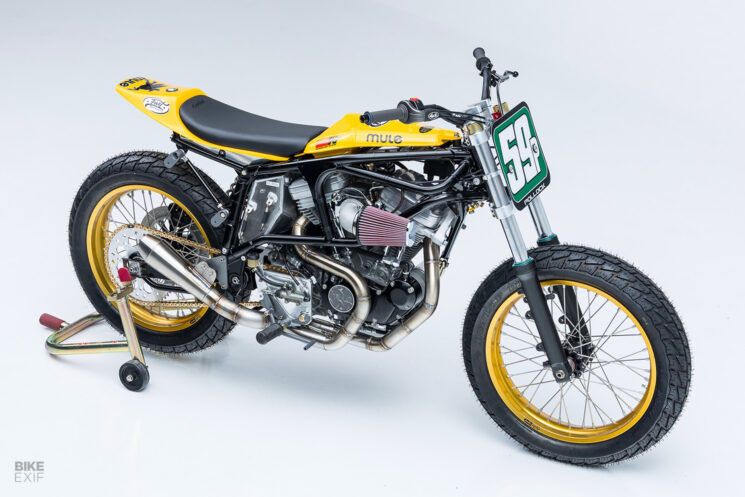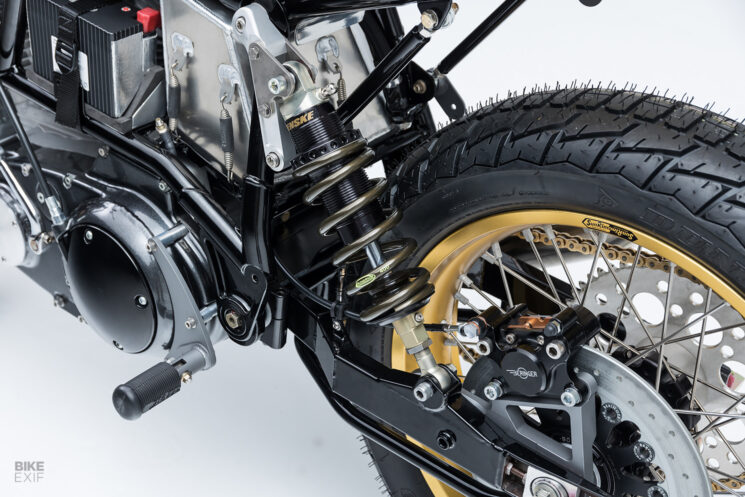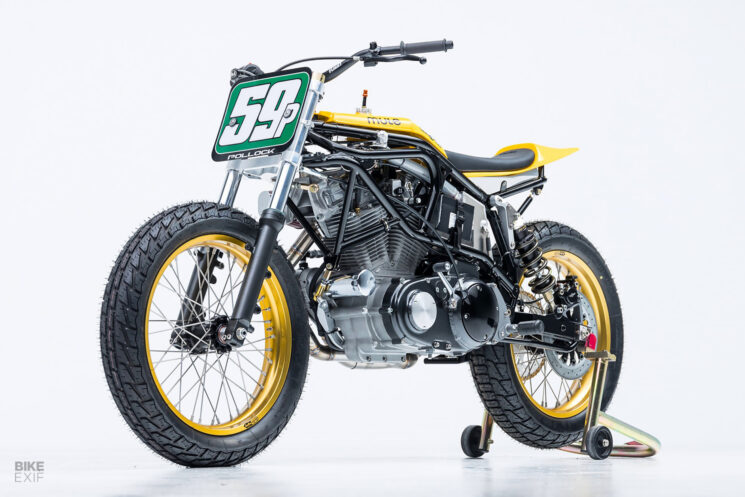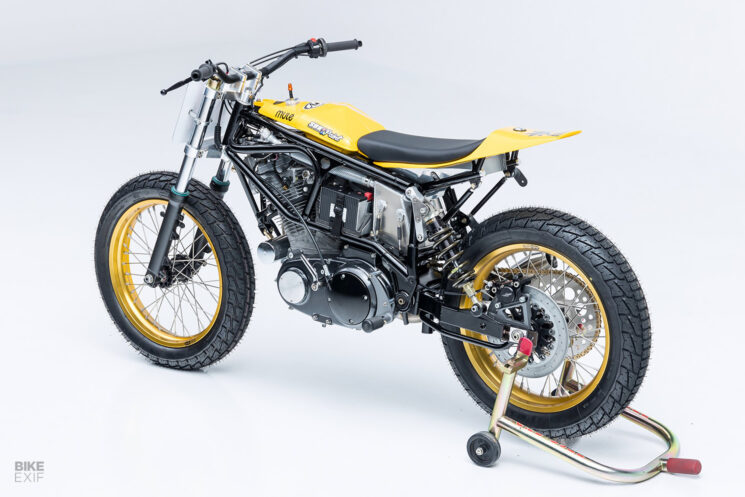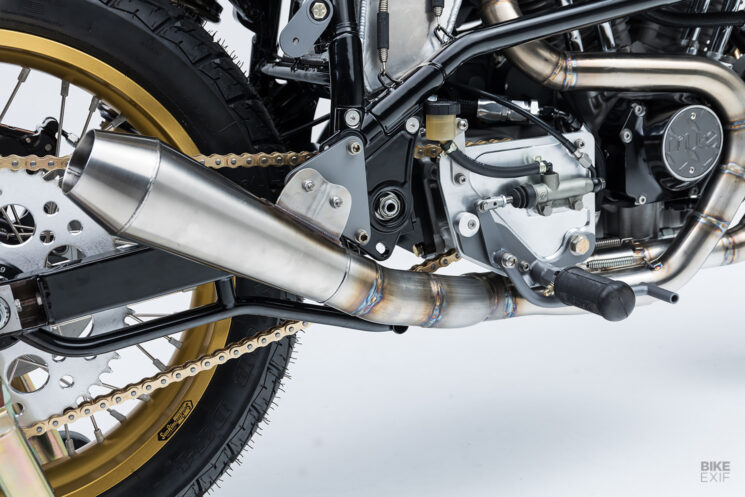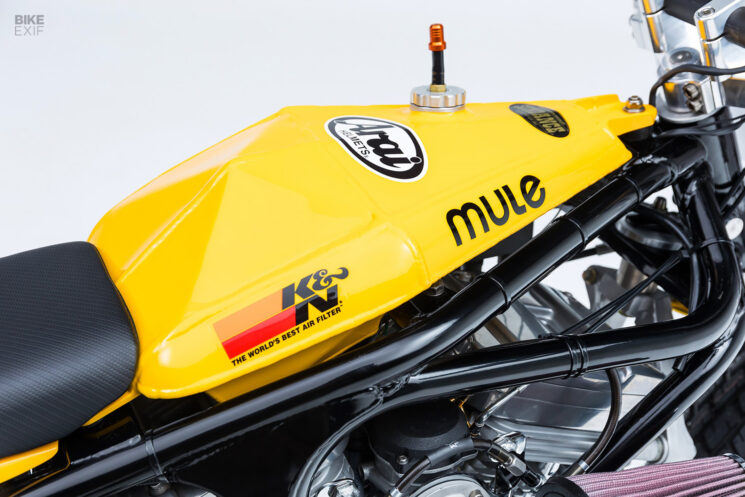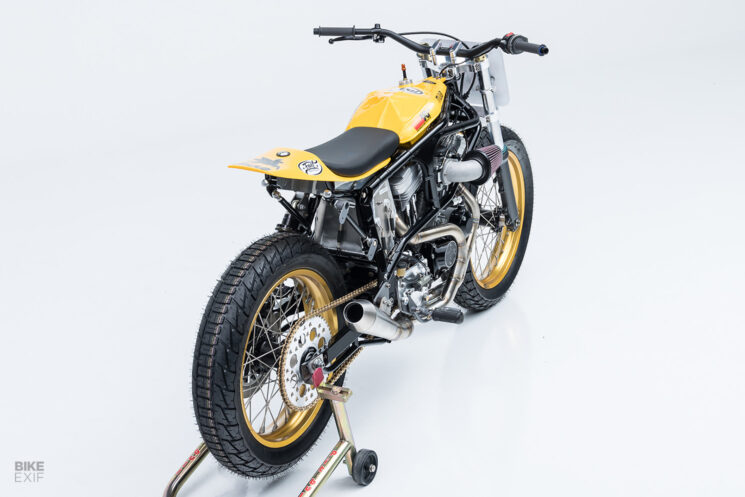
Is there no end to AC Sanctuary’s brilliance? We profile a Kawasaki ZRX1200R from the masters of Japanese muscle, then pivot to a Honda CB750 from the host of a car restoration show. This week’s OEM news includes a look at the 2025 KTM 990 RC R and the new Ryvid Outset electric motorcycle.
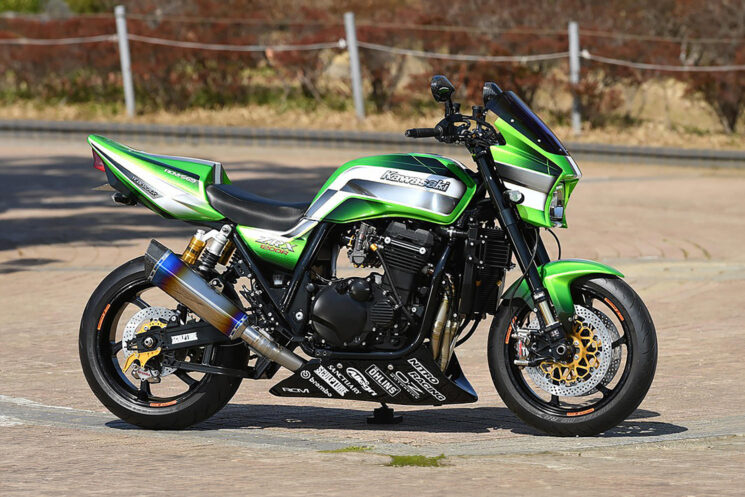
Kawasaki ZRX1200R by AC Sanctuary Hiroyuki Nakamura, the man behind AC Sanctuary, has been building incredible restomods for almost 25 years now. Sanctuary’s Radical Construction Manufacture (RCM) series combines the charm of old bikes with modern suspension, braking, and reliability. This is one of their latest builds; RCM-569.
Starting with an early-2000s model ZRX1200R, the bike was stripped to nuts and bolts with the stock suspension and wheels promptly discarded. The frame was placed in a jig and a laser line was thrown over it to ensure everything was straight. While it was there, key areas were gusseted and the headstock was braced—then a highly modified lightweight swingarm was fitted with Öhlins shock absorbers.
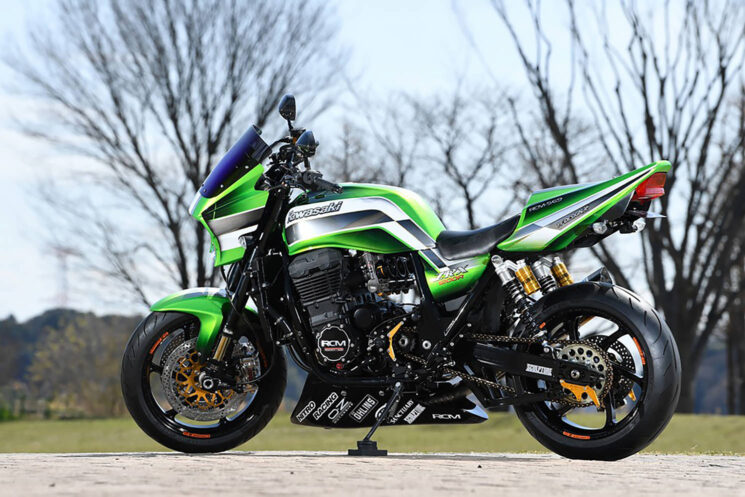
An AC Sanctuary ZRX steering stem kit was installed, which allowed the fitment of upside-down Öhlins forks. A pair of super light OZ Racing hoops, fitted with Sunstar brake discs, replaced the heavy stock alloy wheels. Enormous Brembo GP4-RX radial calipers were fitted to the front end to give modern sport bike braking to the two-decade-old bike.
As is right and proper, the engine also received the AC Sanctuary treatment. The bottom end was balanced and the oiling system was upgraded. High-compression pistons were fitted, along with a brace of Yoshimura Mikuni TMR-MJN carburetors and custom velocity stacks.
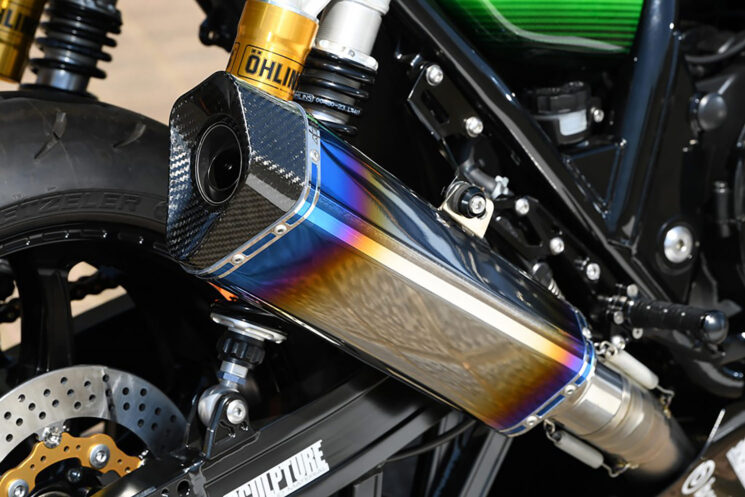
The transmission was replaced with a six-speed model from the Japan-only ZRX DAEG, which was upgraded again with a slipper-style clutch. A bigger radiator was fitted, along with an AC Sanctuary Nitro Racing exhaust system.
The tail and front fender are from the AC Sanctuary catalog, but the tank and side covers are factory. Elevating the OEM bikini fairing is a mirrored windscreen, and the tank sports a race-style filler.

2000s-era sports bikes were much beefier than today’s equivalents, but that just means there is more room for crazy paint. So AC Sanctuary has taken advantage of this with trademark Kawasaki green and acres of custom graphics.
Nakamura-san takes a strict form-follows-function approach to each build, which is just one reason why we love AC Sanctuary. Their bikes are built for riding, and riding fast. [Source]
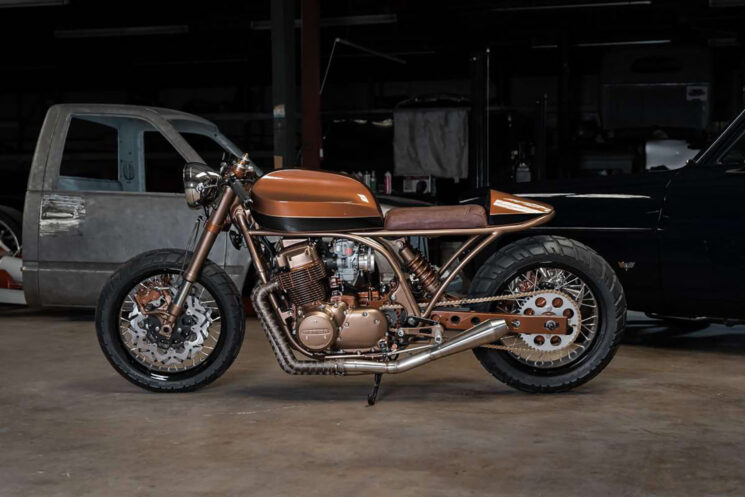
Honda CB750 by The Hot Rod Shop A lot of full-time mechanics don’t want to work on their own stuff when they clock off. However, for Jeremy Bumpus of The Hot Rod Shop and MotorTrend’s Car Fix show, that couldn’t be further from the truth. Itching for another bike build, he took to his workshop after the customers had gone home and the cameras had stopped rolling, to create this alluring Honda CB750 café racer.

It just so happens that there’s a Honda dealership and museum next door to Jeremy’s shop in Corinth, Mississippi. His neighbor took him out back, opened a storage container chock full of old CBs, and told him to pick one. That’s how Jeremy got his hands on this 1972 Honda CB750, and it’s a great parable about why you should be nice to your neighbors.
Just like his hot rods, Jeremy wanted a simple, clean build, and being a master fabricator meant this was no problem. We hope the old CB wasn’t too attached to everything behind the down tubes, because, aside from the engine, they’re the only things remaining from the original bike.
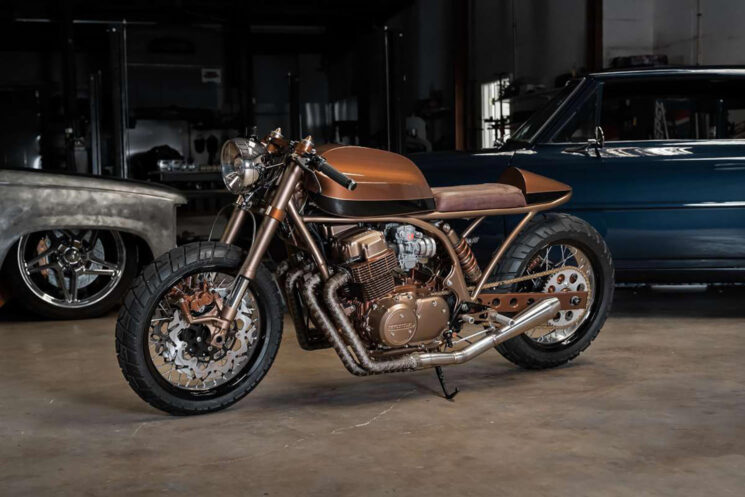
The front end is from a Yamaha R1, and has been adapted to the Honda frame with Cognito Moto yokes. A Honda CBR donated its swingarm and rear suspension, and the chunky spoke wheels and tires are new. A classic Cognito Moto 6.5-inch projector headlight was bolted to the front forks, ahead of a Motogadget Motoscope mini speedometer, clip-ons, new levers, and Motogadget bar-end indicators.
Sitting long and lean, the custom frame certainly stands out against the factory frame. It was bejeweled with a custom tank that Jeremy made by hand, with a tail unit and seat to match. The seat was covered in automotive leather, the tail hump hides the electronics, and the LED taillight sits in a custom housing that creates an interesting ‘infinity’ effect.

The engine is mostly stock, but it has been freshened up with a custom stainless steel exhaust with reverse cone mufflers. A set of CR carburetors was fitted with a Cognito Moto air filter. Thanks to the folks at Sump Thing in the Netherlands, a kit was fitted to the oil pan to convert the CB to a wet sump design, negating the need for a separate oil tank.
Several pennies were found inside the bike during the build process, earning the Honda its nickname (‘Penny’). Pennies were used as washers throughout the build, and we’re guessing it was also the inspiration behind the stunning copper color scheme. [Source]

2025 KTM 990 RC R If, like us, you’ve been watching Jack Miller and Brad Binder wrestle their KTMs to podiums and victories through the last few seasons of MotoGP, then we have some good news to share. KTM is bringing a fully-faired, large-capacity sport bike back to their lineup for the first time in fifteen years. Feast your eyes on the 2025 KTM 990 RC R.
Yes, KTM has already released the limited edition RC 8C for extremely lucky (read: wealthy) enthusiasts. But the KTM 990 RC R is far more accessible to the general population.
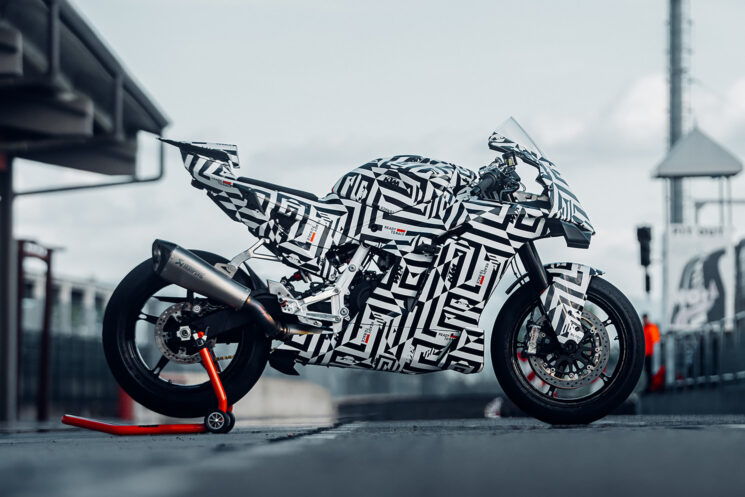
At the heart of this tangerine daydream (we’re just assuming the production bike will come in orange) is a EURO5+ LC8c parallel twin engine. KTM boasts 103 Nm of torque at 10,500 rpm and 126 hp from the 990 cc twin, with the engine alone weighing in at just 57 kilos [126 lbs].
Leaning into KTM’s ‘Ready to Race’ byline, the KTM 990 RC R is a track bike that will be homologated for street use, so it’s got the ergonomics to match the intent. An all-new tank design promotes better contact points for the rider’s knees and arms to lower the pressure on their hands, and adjustable foot pegs are fitted as standard. But the most titillating feature is the gear shifter that can be reversed, to shift racing style.
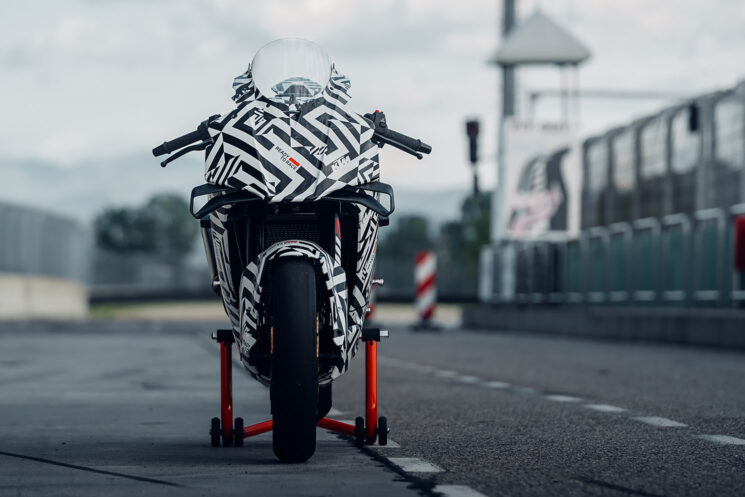
The standout piece of bodywork is the pair of big front wings. The current crop of MotoGP bikes have more wings than a truckload of Red Bull, and we are seeing them on more and more road bikes every year. They make sense on the new 990 though, so we’re glad to see them.
The steel frame on the 990 RC R has been engineered for “dynamic performance” with the frame being stiffened and a 25-degree steering head for more front end. The subframe is diecast aluminum and the suspension comes from KTM’s WP APEX Open Cartridge lineup. From the factory, the cast aluminum wheels will be wrapped in sticky Michelin rubber.
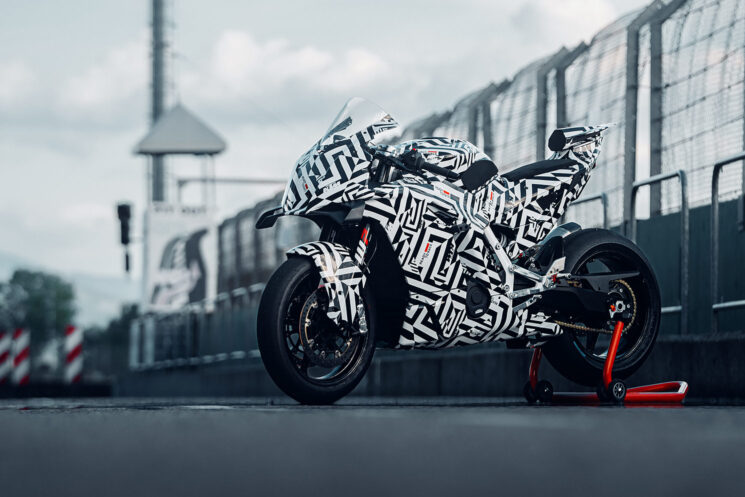
Another exciting aspect of the 990 RC R is the minimal modifications needed to convert it to a full-on track bike. A KTM 990 RC R ‘Track’ edition is also coming, which will pare back the road-going requirements. The lighter-weight machine will have more protection, better bodywork, and a full exhaust system.
This year’s MotoGP season has kicked off with a barrage of superb sprints and races. We hope to see KTM on the top step at least a few times this year, and we can’t wait to throw a leg over the 990 RC R. [KTM]

The Ryvid Outset Ryvid burst onto the lightweight electric motorcycle scene two years ago with the Ryvid Anthem—their idea of the perfect, fully electric urban mobility solution. This week, they announced a new model to their lineup; the Ryvid Outset.
The Anthem was the bike that started it all for Ryvid and is still one of the most unique electric motorcycles available. It has a lightweight pressed stainless steel frame and the motor is housed in the swingarm, keeping the weight down low. But it’s the battery system that stands out as the Anthem’s main point of difference—not only is it positioned low, but it can also be removed from the bike in seconds.
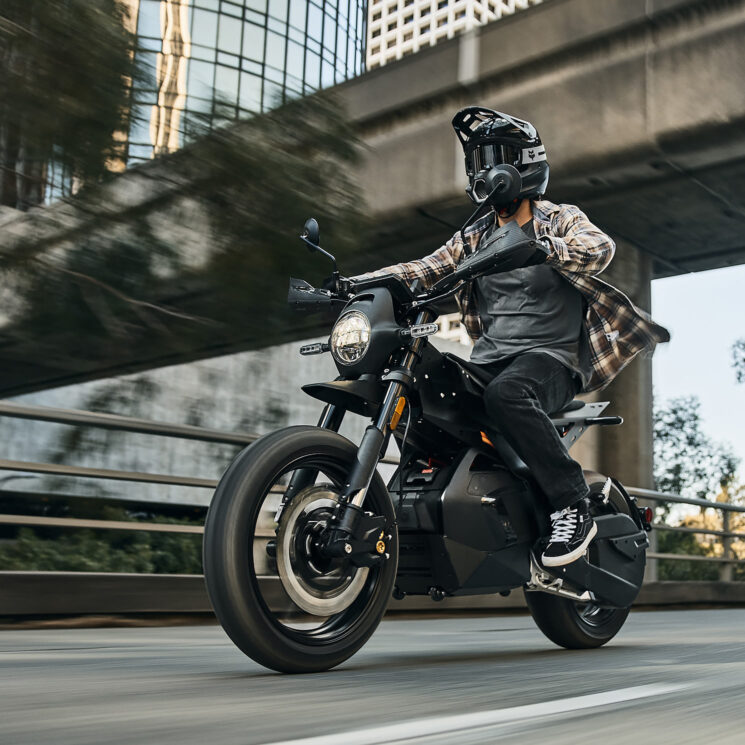
Other standout features of Ryvid’s original design are its striking un-motorcycle-like aesthetic, and a seat height that can be electronically adjusted from 30 to 34 inches.
The Outset shares most of its components with the Anthem, but it’s positioned as a more off-road-curious electric motorcycle. Like the Anthem, it features a 72V air-cooled brushless DC motor and a sealed belt drive, but it has clear dirt bike underpinnings with its angular bodywork and new seat design. Ryvid claims a range of 70 miles and a top speed of 75 mph, and the Outset uses the ingenious 4.3 kWh removable battery (and integrated charger) that put Ryvid on our radar in the first place.
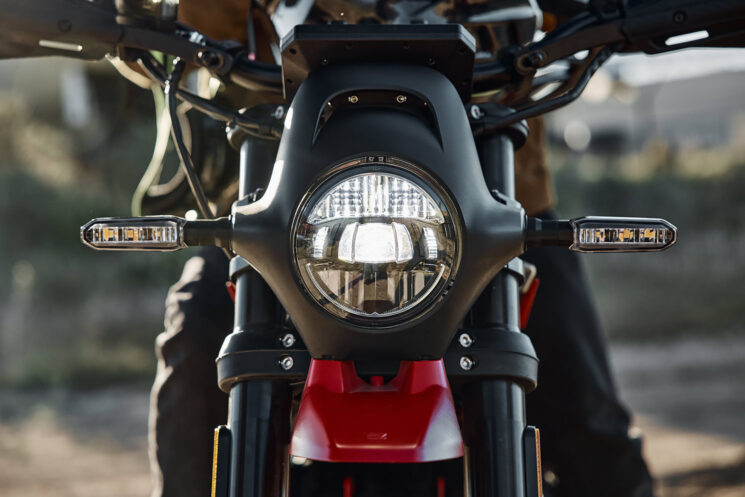
Along with the new bodywork, the Outset gains a new LED headlight design, with a nacelle that’s ever so reminiscent of the air-cooled Hinckley Triumph Thruxton. Other changes include hand guards and two new paint options—’Vapor Grey’ and, our personal favorite, ‘Sector Red.’ The Outset gains longer-travel suspension too, with Dunlop Mutant tires.
The new handlebars are wider, the footpegs have been moved forward, and the seat height is now set at 33 inches—so the adjustable seat mechanism available on the Anthem is not featured on the Outset. While removing the adjustable seat might seem like a disadvantage, the silver lining is that it removes weight and complexity.
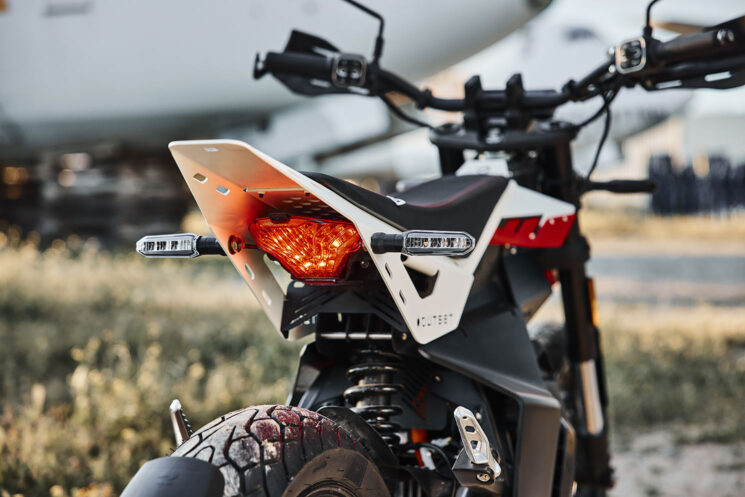
Ryvid’s revised pricing model is attractive too. The Outset has a retail price of just $5,995, making it a more compelling case for urban mobility, while the Anthem features a new price of $6,495. Existing Anthem owners can outfit their bikes with Outset parts to get the same style, which is a nice touch. [More]
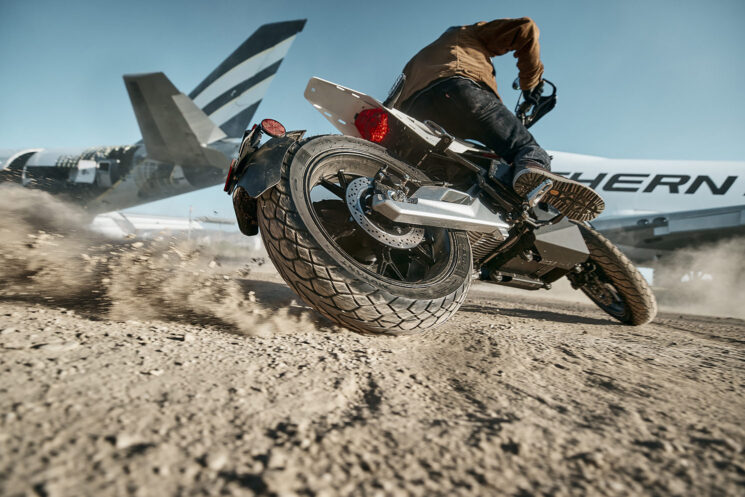
from Bike EXIF https://ift.tt/APySpVw



